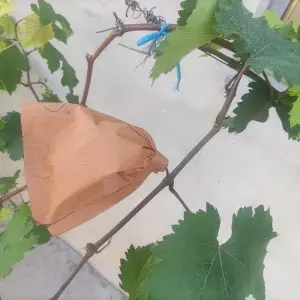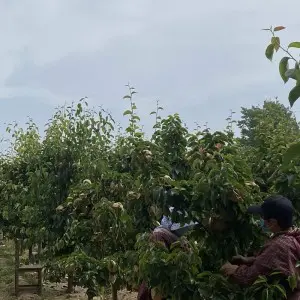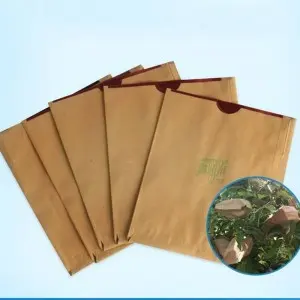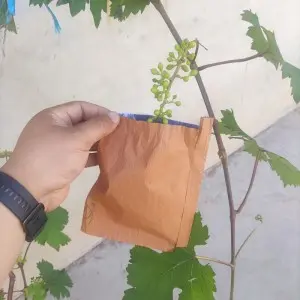Oct . 01, 2025 13:05 Back to list
Eco-Friendly Fruit Paper Bags: Pollen Block & Pest Shield?
Fruit Paper Bags: Field Notes from Real Orchards
I’ve walked more orchards than I can count, and one small upgrade keeps showing up: fruit paper bags. This particular model—FRUIT PAPER BAGS FOR PREVENTING INSECTS AND PESTICIDE RESIDUES IN ORCHARDS—comes out of Caozhuang Development Zone, Fanzhuang Town, Zhao County, Shijiazhuang, Hebei Province. In practice, they brighten color (hello anthocyanins), buffer wind and rain, and, surprisingly, help farms pass residue checks with less drama.

Where the market is going (and why it matters)
Export buyers want cleaner skins and consistent blush; regulators are tightening residue thresholds; labor is tight. Bagging solves several issues at once: fewer sprays, better cosmetic grade, and less downgrading from rub, hail, and pests. Apple, pear, peach—even mango and pomegranate—adoption is climbing. Many customers say grade‑A rates go up after one season; I’ve seen that too, to be honest.

Technical specs (real‑world, field-proven)
| Parameter | Typical Value (≈) |
|---|---|
| Material | Food‑grade kraft with hydrophobic sizing; water‑based inks |
| Grammage | 55–80 g/m² (crop and climate dependent) |
| Cobb60 (ISO 535) | |
| Tear (TAPPI T414) | MD 300–500 mN; CD 350–600 mN (≈) |
| Vent Options | Micro‑perfs/eyelets for airflow and dew release |
| Service Life | 90–150 days on tree; compostable end‑of‑season |
| Compliance | GB 4806.8 food-contact; FSC/PEFC available |

Process flow, testing, and durability
Materials: virgin food‑grade kraft, plant‑based sizing, low‑odor glue. Methods: precision die‑cut, fold, and seam; water‑based flexo print for lot traceability. QC uses TAPPI T410 (grammage), T414 (tear), GB/T 454 (burst), and ISO 535 (Cobb). Field checks include tie‑strength, UV exposure, and on‑tree endurance. In orchards, I’ve watched them ride out two storms and still look tidy—mechanical scuff drops a lot.

Applications and advantages
Use on apples/pears 30–40 days after blossom when fruit is dry; remove 10–20 days pre‑harvest for coloring, unless local practice differs. Benefits include: reduced pest pressure, cleaner peel, less sunburn and rub, brighter color (anthocyanin boost), and lower pesticide exposure. One Hebei grower told me their Grade‑A rate rose ≈18% season‑over‑season; another said post‑harvest washing got simpler.

Vendor snapshot (what buyers compare)
| Vendor | Strengths | Watch‑outs |
|---|---|---|
| Hebei Origin (this product) | Tight QC; orchard‑tested; GB 4806.8 compliance; flexible sizing | Lead time peaks near bloom; book early |
| Generic Import | Low unit cost; wide availability | Ink odor; variable tear strength; uncertain certifications |
| Local Converter | Fast replenishment; custom prints | Paper sourcing may fluctuate; Cobb control varies |

Customization, service life, and quick cases
Options: single/double‑layer, white/brown kraft, micro‑perfs, tie styles, logos, QR traceability. Service life is typically the whole fruiting cycle; real‑world use may vary with humidity and canopy density. Case notes: a Shandong co‑op reported 52% fewer pesticide applications on late pears; a Sichuan orchard cut hail scarring significantly (their word, not a lab trial). It seems fruit paper bags pay back quickest where cosmetics drive price.

Compliance and documentation
Offered with ISO 9001 and ISO 14001; FSC chain‑of‑custody on request. Food‑contact compliance aligns to GB 4806.8; EU 1935/2004 or FDA 21 CFR citations can be provided per batch. Lab sheets show Cobb, tear, burst, and migration limits—ask for the latest lot COA. For export programs, fruit paper bags help reassure buyers by lowering contact spray counts and visible defects.
Authoritative citations
- GB 4806.8-2016: Paper and Paperboard Materials in Contact with Food — National Health Commission of China
- ISO 535: Paper and board — Determination of water absorptiveness (Cobb method)
- TAPPI T410: Grammage of Paper and Paperboard — TAPPI
- TAPPI T414: Internal Tearing Resistance of Paper — TAPPI
- GB/T 454-2020: Paper — Determination of bursting strength
- Regulation (EC) No 1935/2004 on materials intended to come into contact with food — European Commission
-
Comprehensive Guide to CE Certification Apricot Pollen Health Benefits
NewsNov.24,2025
-
CE Certification Mango Fruit Protection Bags: Enhancing Export Quality & Sustainability
NewsNov.23,2025
-
CE Certification Varieties Suitable for Collecting Apple Pollen – Ensuring Quality & Compliance in Apple Breeding
NewsNov.22,2025
-
Comprehensive Guide to CE Certification Mango Cover Bags – Quality, Standards & Trends
NewsNov.22,2025
-
What You Need to Know About CE Certification Peach Blossom Powder Keto
NewsNov.21,2025
-
CE Certification Pear Pollen Collection Base – Ensuring Quality & Sustainability in Global Horticulture
NewsNov.20,2025